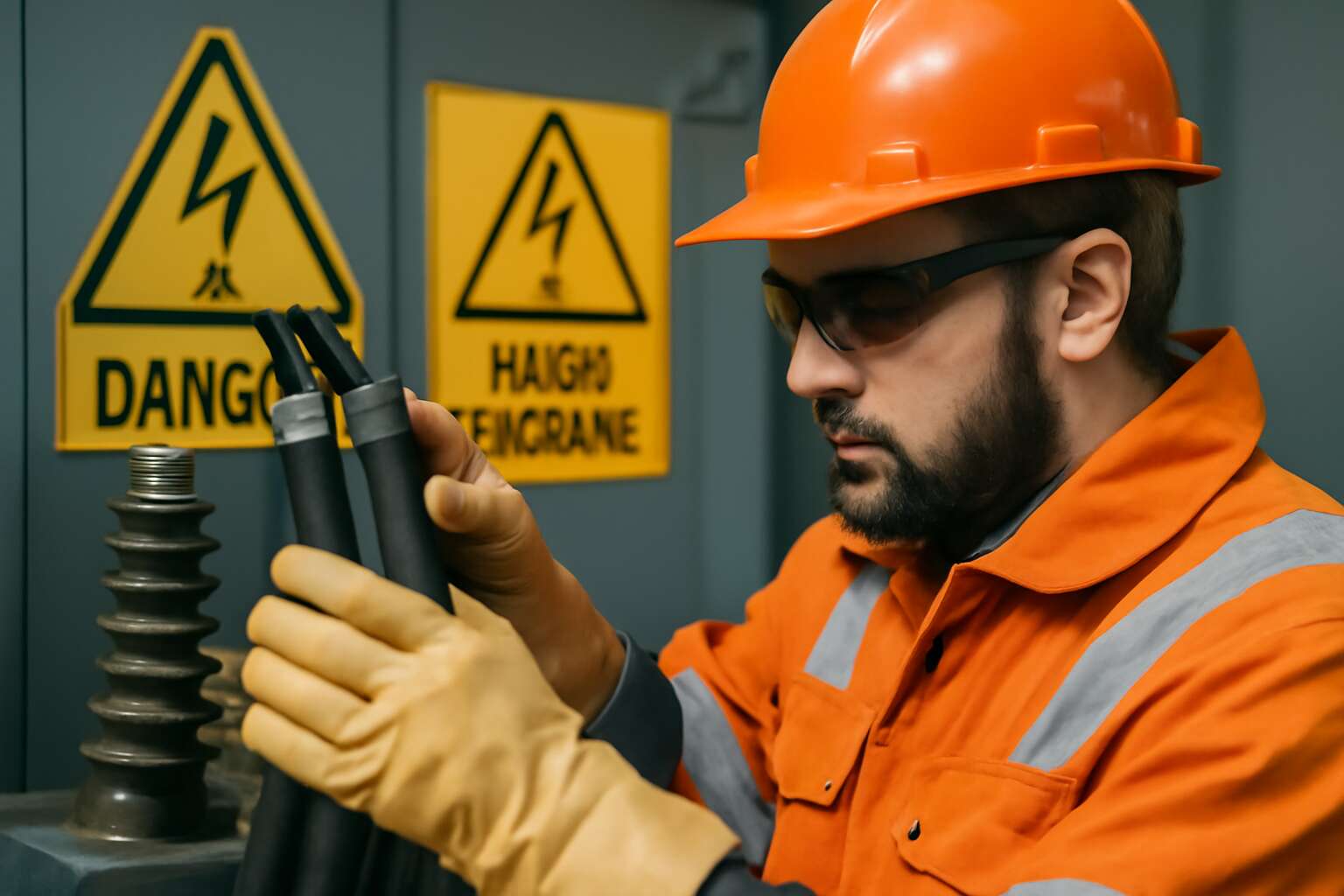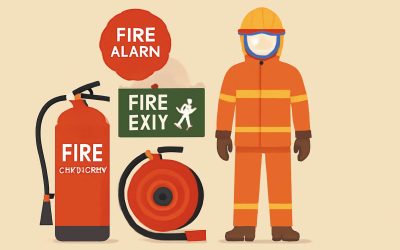Essential High Voltage Safety Equipment for Electrical Work
Personal Protective Equipment (PPE)
In the realm of electrical work, especially with high voltage systems, safety isn’t just a precaution—it’s a lifeline. Every year, countless workers face the peril of electric shocks, which can be fatal without proper protection. That’s why a comprehensive high voltage safety equipment list is essential for safeguarding lives and ensuring smooth operations. Personal Protective Equipment (PPE) serves as the first line of defense, shielding workers from unexpected arc flashes and accidental contact with live wires.
Proper PPE should include insulated gloves, flame-resistant clothing, and certified eye protection. These items are designed to withstand the intense energy released during electrical faults, providing vital protection. For added safety, many professionals also rely on insulated tools and voltage detectors, which are crucial components of the high voltage safety equipment list. Ensuring that every piece of equipment is tested and compliant with industry standards can make all the difference when working in high-risk environments.
Remember, safety is a shared responsibility. The right high voltage safety equipment list isn’t just about compliance—it’s about protecting the human element behind every wire and connection. When safety measures are prioritized, the risk of injury diminishes, and workers can focus on their tasks with confidence and peace of mind.
Electrical Safety Tools and Devices
Working with high voltage systems demands more than just skill—it requires the right tools to keep dangers at bay. Electrical safety tools and devices are the unsung heroes in preventing accidents and ensuring worker safety. These essential components form a crucial part of the high voltage safety equipment list, designed to detect, isolate, and control electrical hazards effectively.
One of the most vital items is the voltage detector, which allows workers to verify the presence of live electricity before commencing any work. Insulated tools, such as screwdrivers, pliers, and wire strippers, are engineered to withstand high energy flux, reducing the risk of accidental shock. Additionally, specialized grounding equipment helps to dissipate residual charge, preventing dangerous arcs during maintenance.
For comprehensive safety, many professionals include in their high voltage safety equipment list:
- Insulated gloves and sleeves
- Voltage testers and meters
- Arc flash suits and flame-resistant clothing
Ensuring all these tools meet industry standards is non-negotiable. After all, the right electrical safety tools and devices are the difference between a safe job site and a tragedy waiting to happen. When every piece of equipment aligns with safety protocols, the focus can shift from fear to effective work—because safety should never be an afterthought in high voltage environments.
Barrier and Insulation Devices
When it comes to working with high voltage systems, the importance of robust barrier and insulation devices cannot be overstated. These components serve as the first line of defense, creating a physical separation between live electrical parts and the worker. In environments where a single lapse can lead to catastrophic consequences, the integrity of these safety measures is paramount. High voltage safety equipment list items such as insulated barriers and arc-resistant insulation mats help contain potential sparks and arcs, significantly reducing the risk of injury or equipment damage.
Effective insulation devices are meticulously designed to withstand extreme electrical stress, ensuring that energy does not breach protective boundaries. For example, insulating barriers made from durable, non-conductive materials form a formidable shield around high-voltage components, enabling safe access during maintenance or troubleshooting. When combined with high-quality insulation tapes and covers, they form an integrated safety network that keeps hazards contained and workers protected.
In South Africa’s demanding electrical landscape, adhering to the high voltage safety equipment list is more than a regulatory requirement—it’s a moral obligation. Proper barrier and insulation devices not only uphold safety standards but also foster confidence among personnel, allowing them to focus on their tasks without fear. After all, in high voltage environments, the right insulation and barrier tools are the silent guardians, preventing unseen dangers from turning into tragedies.
Additional Safety Equipment and Accessories
Lockout/Tagout Devices
In the shadowed corridors of high voltage environments, where unseen currents pulse with malevolent intent, the right safety measures can mean the difference between life and death. Beyond the familiar guardians of PPE and insulated tools, there exists a realm of additional safety equipment and accessories that fortify the vigilant worker’s arsenal. Lockout/tagout devices, for instance, serve as silent sentinels, sealing the fate of the energy source and preventing catastrophic re-energization during maintenance.
Ensuring absolute control over electrical hazards demands more than just the basics. A meticulously curated high voltage safety equipment list might include:
- Padlocks and safety tags that declare “Do Not Energize” with unwavering authority
- Specialized lockout boxes for equipment isolation
- High-visibility warning signs that pierce the darkness of complacency
Each item, a piece of the macabre puzzle, binds safety tightly into the fabric of high voltage work sites. When darkness looms, and the unseen currents threaten chaos, these accessories stand resolute—silent yet indispensable, guarding the threshold between danger and safety with unwavering resolve.
Warning and Signage
In the shadowed corridors of high voltage environments, unseen currents can turn deadly in an instant. While PPE and insulated tools form the frontline, additional safety equipment and accessories create an unbreakable barrier against catastrophe. Warning and signage play a pivotal role—bright, unmistakable signals that pierce the darkness of complacency and command respect from every worker. When every second counts, clear communication becomes a matter of life and death.
Implementing a comprehensive high voltage safety equipment list involves more than just physical barriers. It includes strategically positioned warning signs, reflective tape, and illuminated safety markers that ensure visibility in the most challenging conditions. These elements serve as silent guardians, alerting personnel to hazards lurking nearby and reinforcing safety protocols. In high-stakes environments, such visual cues are invaluable, transforming the worksite into a fortress of awareness and vigilance.
- High-visibility warning signs
- Illuminated safety markers
- Reflective tapes and decals
- Barrier tape with clear hazard messages
Each piece, a vital part of the high voltage safety equipment list, fortifies the unseen battleground where currents threaten chaos. When darkness and danger collide, these accessories stand resolute—silent sentinels that guard the threshold between safety and peril, ensuring every worker’s survival amid the relentless pulse of electrical energy.
Emergency and First Aid Equipment
In the realm of high voltage environments, emergencies can escalate in the blink of an eye. That’s why comprehensive safety measures extend beyond PPE and insulated tools—emergency and first aid equipment are crucial components of the high voltage safety equipment list. These tools can mean the difference between a minor incident and a catastrophe. Quick access to first aid supplies not only mitigates injuries but also demonstrates a commitment to worker safety that is both proactive and unwavering.
Every high-stakes site should be equipped with essential supplies such as burn kits, emergency eyewash stations, and trauma first aid kits—each meticulously chosen to address electrical burns, shocks, or other injuries associated with high voltage work. To streamline response times, some sites incorporate clear signage indicating the location of this equipment, ensuring that help is always within reach when seconds matter most.
- Burn treatment kits
- Emergency eyewash stations
- Trauma first aid kits
- Automated external defibrillators (AEDs)
In environments where currents hold the power to turn chaos into calm, these emergency and first aid elements form an unbreakable safety net—silent guardians standing ready to intervene when the unthinkable occurs. The high voltage safety equipment list, therefore, must always include these vital tools, transforming treacherous work sites into zones of resilience and rapid response.
Standards and Compliance for High Voltage Safety Equipment
International safety standards
When it comes to high voltage safety equipment, adhering to international standards isn’t just a bureaucratic hoop to jump through; it’s the backbone of reliable and safe operations. In a world where a single misstep can turn a routine maintenance job into a catastrophe, compliance acts as the silent guardian. The high voltage safety equipment list must align with global safety standards to ensure every piece of gear performs its duty without fail.
Standards such as IEC 61243-1 for live working and IEEE 1584 for arc flash hazard analysis serve as the gold standard in this field. These guidelines specify everything from insulation requirements to safe working distances—because in high voltage environments, precision isn’t optional. South African industry professionals often reference these standards to ensure their high voltage safety equipment list remains compliant, minimizing risk while maximizing efficiency.
To keep safety measures on the cutting edge, organizations should regularly audit their equipment against these international safety standards. This isn’t just about ticking boxes; it’s about cultivating a safety-first culture that respects the power of high voltages. After all, when working with high voltage, compliance isn’t just a legal requirement—it’s a moral imperative. Remember, a well-curated high voltage safety equipment list, aligned with the right standards, is your first line of defense in the electrifying world of high voltage work.
Inspection and Maintenance
In the realm of high voltage operations, safety isn’t just a protocol—it’s a philosophy rooted in unwavering compliance. Regular inspection and maintenance of high voltage safety equipment are vital to uphold the integrity of the high voltage safety equipment list. Adhering to international safety standards like IEC 61243-1 and IEEE 1584 ensures that every piece of gear functions flawlessly under demanding conditions. These standards serve as a benchmark, guiding organizations in South Africa and beyond to verify that their equipment remains reliable and compliant.
Inspection routines should be meticulous, encompassing visual checks, functional tests, and calibration. This process helps identify wear and tear, potential faults, or deviations from safety specifications. To streamline this, many organizations rely on a systematic approach, such as a scheduled audit or a comprehensive checklist. This checklist might include:
- Verifying insulation integrity
- Assessing physical condition of safety devices
- Testing grounding and bonding systems
- Ensuring warning and signage are visible and legible
By integrating these practices, companies cultivate a culture of proactive safety, ensuring their high voltage safety equipment list remains current and effective. The continuous cycle of inspection and maintenance is more than a regulatory requirement—it’s a moral responsibility that safeguards lives and sustains operational excellence in high voltage environments. When every element on the list is meticulously checked, it transforms safety from a mere checklist into a resilient shield against unforeseen hazards.




0 Comments